Guest post by Laura Gowers, co-author of Listen to Your Microbes | 7 min read
Most of life on Earth is invisible! We are, in fact, living in a microbial world, surrounded by trillions of microscopic creatures. They are all around us, in the air we breathe, the water we drink; they are in us and on us and our health and the health of our planet is dependent upon them. All life on Earth is connected and Listen to Your Microbes is a graphic book about this interconnectedness of life!
Cross-Country Collaboration
At a time when the world was deep in the depths of a lockdown due to Covid, I was fortunate to connect with Professor Fergus Shanahan in February 2021. We were working as part of a team on a project to promote scientific research among Irish Travellers by highlighting how microbiome science can shed new light on their ethnic identity, history, and way of life.
Lockdown had encouraged this new way of working and presented a wonderful opportunity to collaborate, creatively, from our own homes and our own countries; connecting our minds and our ideas and combining our strengths and knowledge.
Working on this project together gave us an opportunity to appreciate each others skills and gave us the idea to work collaboratively on a new project, blending science with art to create our brand new book, Listen to Your Microbes, which explores the narrative of the microbiome from the perspective of our friends deep within our guts—our microbes.
This book, in a playful way, communicates complex scientific research and fundamental principles about the wonderful world of microbes and how important our relationship with these creatures is to maintain a healthy and happy life.
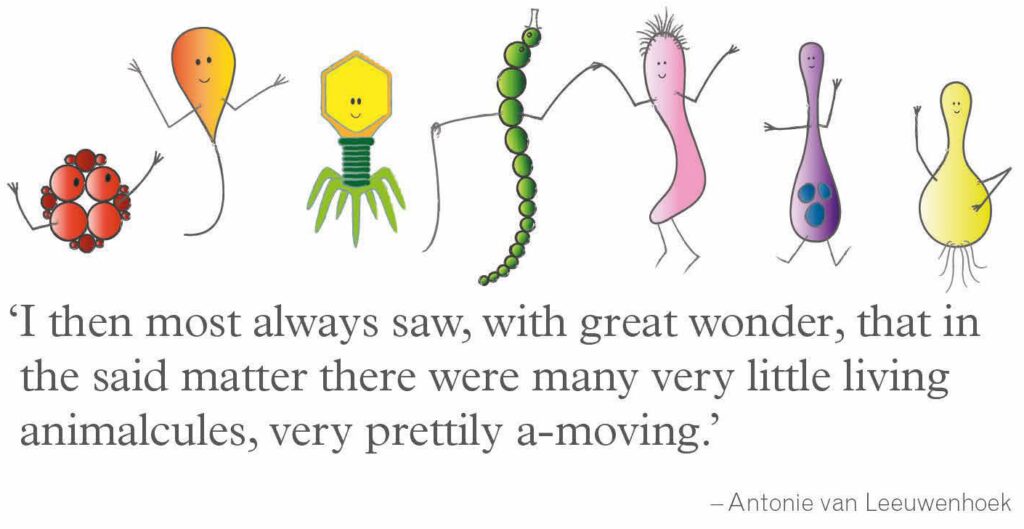
Creation & Connection
Creativity comes from connection, and this was the key to our collaboration. Our discussions reinforced that we both found beauty and mystery in the microbiome, and we decided that we were going to produce a graphic piece of work that would shine a light on these creatures, giving them the stage and the opportunity to tell the non-expert what each of us can do to protect this incredibly important relationship with our microbes to keep us and our planet healthy.
We worked together through and out of lockdown, each week, allowing themes and styles to emerge. It was important for us that we established, early on, a creative environment that allowed us to experiment with ideas and styles that later became our book. This meant that we both felt free to express ourselves by sharing ideas and works in progress.
Some early drawings were simply rough sketches on a piece of paper. We built trust in each other and felt comfortable to share our emerging ideas. Some scientific concepts were introduced, thrown out, and reintroduced. The process was iterative until we found what we believed we needed to share with the public in a way that we hoped would educate, entertain, and hopefully inspire people with reasons and not rules to, well, listen to their microbes!
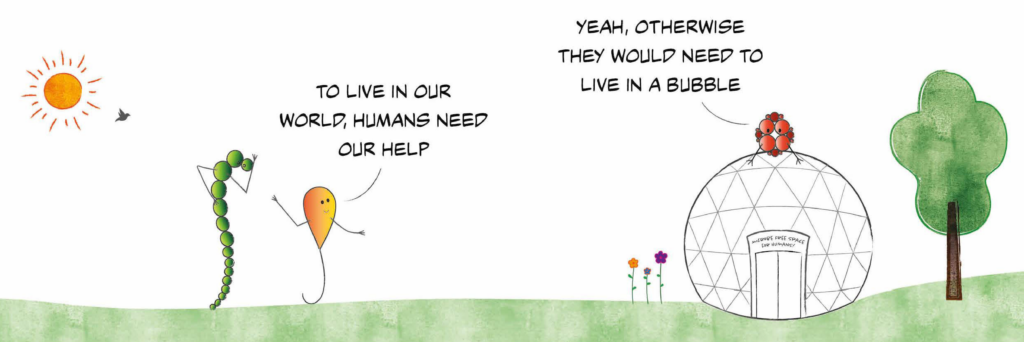
The Art of Science
Our unique challenge was to use visuals and words to translate the complexities of microbiome research by conveying issues that are spatially and temporally distant to many people in a simple way that would attract and feed curiosity. This was fun for us and sometimes felt like a puzzle—to unravel the complexity of the message without losing its significance and true meaning, and to not dumb it down but to present the concepts with impact so that people can access them quickly —and so Listen to Your Microbes uses simple imagery, humour, and wit because communicating science is not just about reporting facts to a non-specialised audience but rather redefining or contextualising concepts in a way that will reach and affect often several non-expert audiences in various ways.
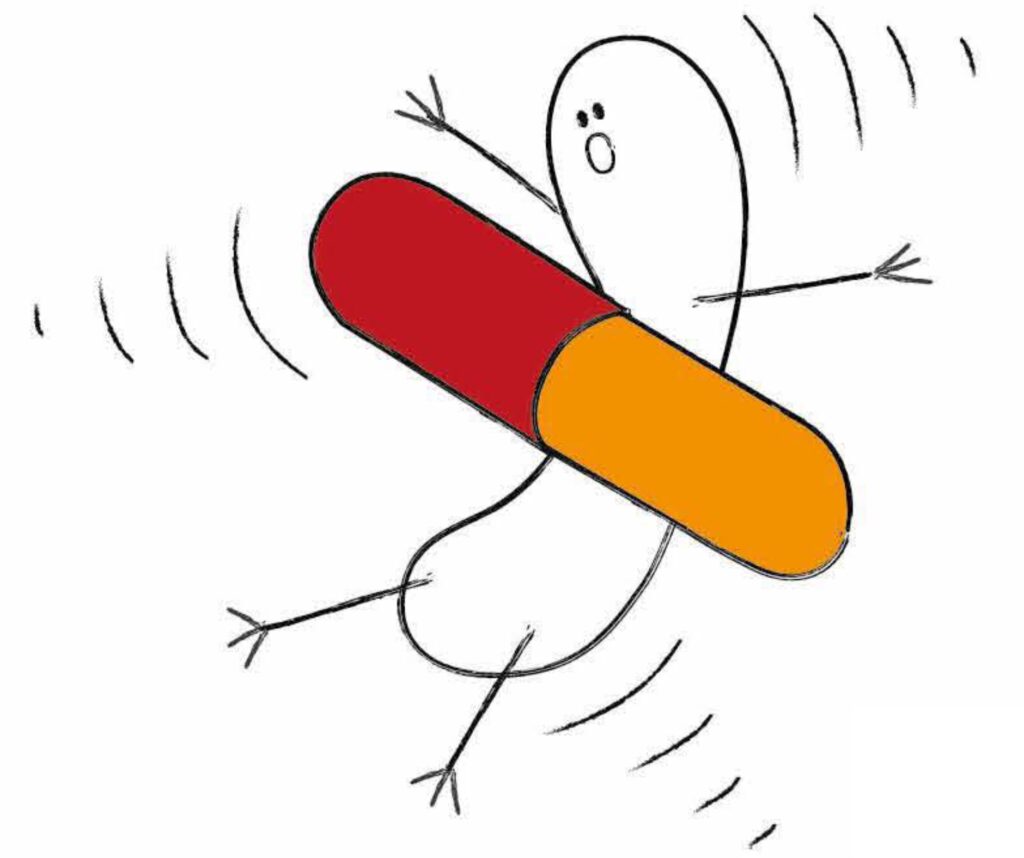
It is well recognised and researched that the use of graphics and visuals is an effective way to communicate scientific principles and can be used to simplify complex messages. However, not all visualisations are effective and are often employed to accompany or simplify a written discourse as an addition rather than an integrated part of the message. It could be assumed that if the public are provided with knowledge about a scientific subject this will increase their interest in the subject and persuade them to make a response or alter their behaviour.
Graphic design and illustration are often seen as a service industry, with specialists who are well versed in creating or enhancing visual appeal. Listen to Your Microbes is an example of the role and value of collaboration between the discipline of science and graphic design to produce creative approaches to support the communication of the complex field of microbiome science research. Our collaboration was driven by iterative creative practice which we believe enhanced the impact of the message and improves a call to action.
When the Small but Mighty Speak

Stories are very compelling and so by giving the voice to the microbes and allowing them to tell us what we need to do is perhaps more encouraging and persuasive to help the reader consider what action they may need to take to improve their own health.
Combining images and text creates a balance for the reader and allows time to reflect upon the information with visual relief in the form of charming imagery.
Our purposeful use of simple imagery, using line and minimal use of colour, gives the reader plenty of time to digest the information and perhaps draw on their own imagination as they make sense of the content and how they live in this microbial world. Scale is left up to the imagination of the reader!
The book is split into five sections all based on our relationship with microbes… It covers how we evolved together, how we discovered each other, how we live together, how we grow old together, and how we can survive the future together.
Little Animalcules A-Moving Very Prettily!
Although the book introduces famous scientists, doctors, and great authors of literature, there is only one human in the book who gets to speak and that is Antonie van Leeuwenhoek. We describe him in our book as a local hero. He described the microbes he saw as ‘little animalcules a-moving very prettily!’ The characters in the book were inspired by the sketches that he drew of the microbes he saw.
Fergus and I chose not to name the characters (of course, there are trillions of them in real life), but we did have our own names for them and would, for example, refer to the little red guy as ‘the philosopher’, as he would always be the one to give the sensible advice or make sense of what is happening.
There is also movement in the book. For example, when we show that microbes have rhythm and are moving around a music stave—with a bass clef to show that they live deep down in the depths of our bowels—as they move through the day with us and are affected by our sleep and waking patterns.
They dance the cha-cha-cha and exclaim to us that you can’t just kombuch-cha your way to a healthy life! They tell us that even though the science is complex, the message is simple.
Fergus and I were both inspired by Antonie van Leeuwenhoek and the images he drew and, like the great discoverer, we are intrigued and charmed by the diversity, beauty, and ingenuity of these wonders of nature. We hope that the images in our book of personal microbes will feed curiosity and respect for the microbes we depend on.

The Much, Much Bigger Picture
Our book is humble—it’s not about us—we are part of something much bigger than we could ever imagine! Our book aims to encourage the reader to emerge more knowledgeable, entertained, and possibly asking for more.
And since we recognise that some readers will have more questions and want to know more, and since we wanted to keep our book uncluttered, we have included QR codes which lead to more information—for example, there are video interviews with scientific researchers from APC Microbiome Ireland, who, like Antonie van Leeuwenhoek, spent time studying and researching the wonderful world of microbes and want to share with you what they have discovered!
Blending science with art to create our brand new book, Listen to Your Microbes, explores the narrative of the microbiome from the perspective of our friends deep within our guts. Our microbes.
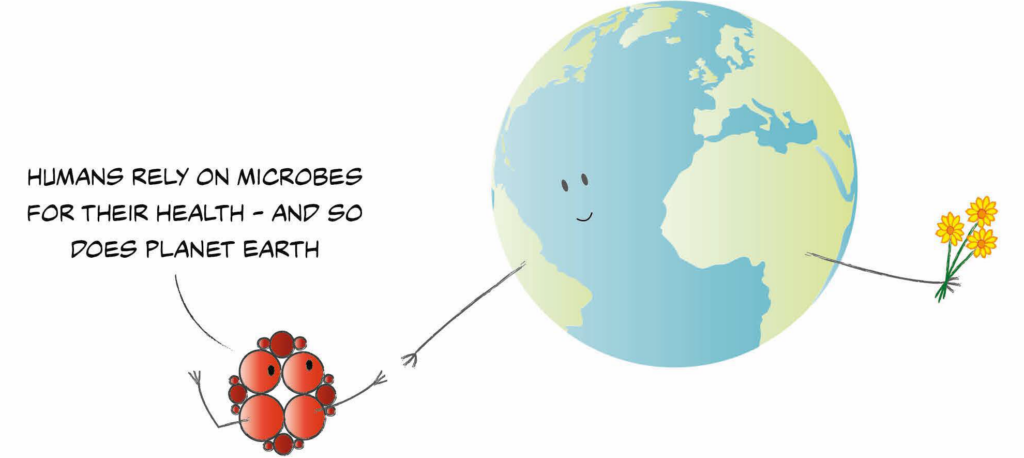
Become acquainted with your own microbiome with Listen to Your Microbes! Available at Pen & Sword Books.
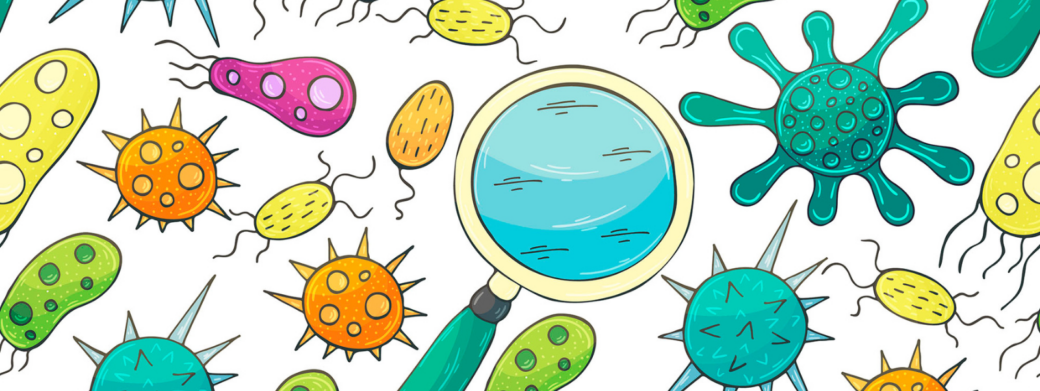
 Follow
Follow